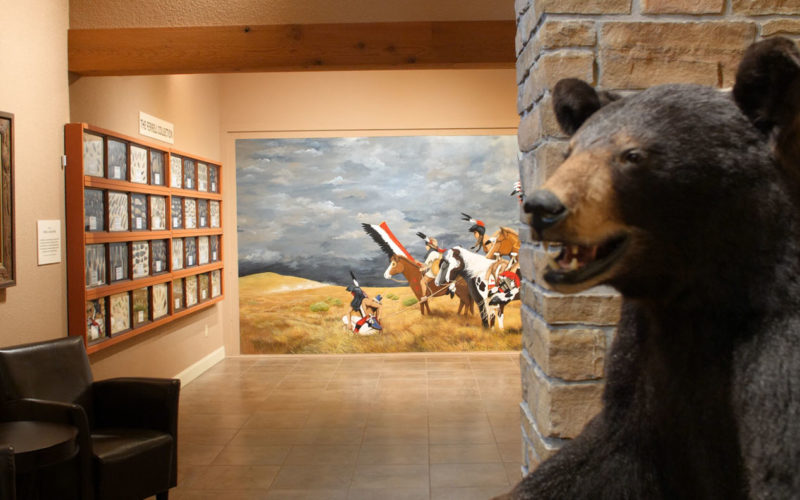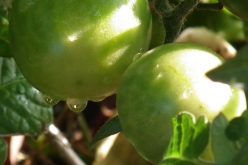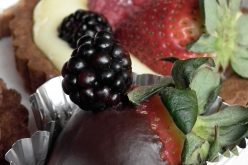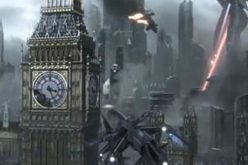Sky’s the limit for MONAH online
BECCA MARTIN-BROWN
bmartin@nwadg.com
“Stop typing and close your eyes,” David Bogle instructs a reporter during a phone interview. “Picture an American Indian in your mind.”

The virtual tour of the Museum of Native American History starts with its founder, David Bogle, who started the museum in his home in 2006. (Courtesy Image)
Bogle already knows what most people are going to see: A Plains or Sioux warrior, wearing a headdress and holding a staff or bow in his hand, astride a spotted pony, looking across a vast prairie to the distant hills.
“That’s what TV and movies have done to us,” Bogle says. “In reality, there was probably a time somewhere between 1860 and 1880, if you were in the right location at the right time, you might have been able to find that guy. But it’s not reality in the big picture. What we do at the Museum of Native American History is we teach diversity — and we teach 14,000 years of history you probably didn’t learn in school.”
Bogle, of Bentonville, founded the museum in his home in 2006 and bought the building at 202 S.W. O St. in 2008. He’s added onto the structure four times and constantly expands the collection, which started with several sets of framed arrowheads and now includes artifacts from prehistory in North and South America to modern day. Continuing to collect during the pandemic wasn’t enough, however, to satisfy Bogle or his staff. Instead, they’ve spent the past five months creating a virtual version of MONAH that would do a big city museum proud.

MONAH founder David Bogle has collected Indigenous artifacts from prehistory in North and South America to modern day. (Courtesy Photo)
“As crazy and as heartbreaking as the pandemic is, we have all had to adapt to the new day to day,” says the museum’s director, Charlotte Buchanan-Yale. “For me, I see a new balance and a time for a better understanding. We have more time now than we did in our past fast-paced days to walk in the slippers of others. With this reset, MONAH has a lot to offer in raising the awareness of the diversity of indigenous nations and our collective history.
“We wanted our virtual tour of the museum to reflect David Bogle’s vision, and I wanted our ‘virtual’ visitors to experience MONAH’s special events with present-day indigenous cultural leaders in a joyful celebration of the human spirit that inspires you to want to learn more,” she explains. “We did not have the time to create this vision before the pandemic at the pace we were running with the museum open. These last five months gave us the time to work behind the scenes to build this foundation.”
Buchanan-Yale knows a great idea requires great people to come to fruition. “In this case, [it required] people who feel that working at MONAH is more than a 9 to 5 job,” she says, like Darcy Calaway, who is the creator of the museum’s new online store.

Late Classic Navajo Dress Panels, ca. 1870s. This Navajo “Biil” dress was created by lacing together two woven panels. It was made from hand-spun wool that has been Indigo and cochineal dyed. The brilliant red coloring was made from cochineal, a small cactus-dwelling insect. It is a new addition to the collection at the Museum of Native American History in Bentonville.
(Courtesy Photo)
“We found that one of the first things people would ask when they called was if they could still shop at our gift shop,” Calaway says. “It was amazing to see so many people who still wanted to support us, even through such a communal crisis. We felt an online store would not only help support the museum during the closure, but it would create a way to reach people from all over the country and globe and give us a larger platform when it came to featuring and supporting Native American artists.
“The online store is still in its early stages, so we tried to focus on some of our best items,” Calaway explains. “We have some amazing limited edition prints by artist Bobby C. Martin, Native American books for all ages, Native made pottery, jewelry and kachina dolls, rare seeds often used by Natives, as well as some one-of-a-kind items from August’s Featured Native American Artist of the Month, Steven Paul Judd.
“Each month we will be featuring a new artist of the month with new products from them, but we will also be adding to all of our other categories as well,” she adds. “We have some amazing MONAH products on the way and already have a stunning collection of Native-made pottery and jewelry that we will be adding to little by little.”
Growth during the pandemic also took community partnerships. Troy Campbell of the Northwest Arkansas House of Songs introduced Buchanan-Yale to Evan Alvarado of AENIMATE Media Productions, who created the video tour of the museum.
“To continue the exciting and educational experience that a visitor would typically experience [at the museum], the virtual walk-through tour has to emulate that,” Alvarado says. “The museum’s tour is organized chronologically, so we approached the video that way, as if you’re walking through the museum from entrance and lobby all throughout the different time periods and out the exit. The video needed to simulate walking through the museum, as well as focusing in on the detailed artifacts in the collection.

MONAH has a new unofficial animated mascot, Tiny Tusker, so named in honor of “Tusker,” the woolly mammoth skeleton that greets visitors to the Bentonville museum when it is open.
(Courtesy Image)
“The museum is always growing, continuously adding to its collection and space,” he adds. “I imagine that the virtual tour will also continue to be updated to reflect those changes. I’m finding out that there’s a lot of history to unravel within all of the different artifacts and time periods. The most rewarding thing for me is getting the time to ingest all the information, stories and history that are contained in these videos and learning more about Native American culture. I’m slowly watching my ignorance of history and other cultures wash away, as these amazing people enlighten me with their stories and passion of their rich cultures.”
Also new is Tiny Tusker, the museum’s animated unofficial mascot, created by Dano Johnson.
“I have been dreaming of Tiny Tusker for some time,” Buchanan-Yale admits, saying she wants to see the museum’s fans “take him on their adventures around the world with #tinytusker.”
But in the end, it all comes back to the people who tell the stories.
“Our family of presenters seems to transcend into consultants such as Gayle Ross, JR Mathews, Bobby Bridger and Sam Scinta,” Buchanan-Yale says. “We try to give them a platform they are proud to share and recommend MONAH to other presenters to join us and make Northwest Arkansas a destination.”
Right now, that means a virtual destination, of course, and Buchanan-Yale has that covered with “Hear Our Voices,” an ongoing series of Native American stories curated by Gayle Ross; virtual “Creative Visions Workshops,” including one Aug. 22 with Bobby C. Martin; “Native American and Indigenous Women Historic Trailblazers” with Farina King; a series with Felicia Ruiz, who is known as the “Kitchen Curandera”; “Indigenuity,” inspired by the book “Red Alert,” with Dan Wildcat; and the annual Native American Cultural Celebration.

David Bogle, who is of Cherokee heritage, was attracted to Native American artifacts by a friend’s arrowhead collection, some of which he purchased. He’s been expanding on his passion ever since.
(Courtesy Photo)
“This year’s Virtual Cultural Celebration — ‘Four Directions. One Earth. Mission United’ — will feature astronaut John Herrington Oct. 1-3,” Buchanan-Yale says. “We are also working on podcasts for later in the year and creating an Indigenous news network, The Morning Star, where we’ll share news and arts and culture of Native America by partnering with many news outlets.
“Oh, and we have a collaborative exhibit opening Nov. 21 here and at Crystal Bridges Museum of American Art called ‘Companion Species: We Are All Related,” she adds. “The project takes inspiration from the recent ‘Companion Species: Speech Bubble’ by Marie Watt (Seneca).
“And look for productions with House of Songs coming soon.”
Buchanan-Yale says she doesn’t know when the museum will physically

Huron Coat, ca. 1800-1840. This Huron coat is made from tanned moose hide. It is decorated at the cuffs, shoulders and around the collar with dyed moosehair embroidery and edged with silk and white beads. It is new to the collection at the Museum of Native American History in Bentonville.
(Courtesy Photo)
reopen.
“As a small staff, we face unique challenges in reopening safely, but we are working hard and closely with our board to create a reopening plan that ensures safety for everyone,” she says. “Right now, we are excited to share MONAH globally.”
FYI
Museum of Native American History
monah.us

“What we do at the Museum of Native American History is we teach diversity,” its founder says, “and we teach 14,000 years of history you probably didn’t learn in school.” (Courtesy Photo)

MONAH partner artist Bobby C. Martin’s maternal grandmother was full-blooded Creek and spoke her native language fluently. A professor of visual arts at John Brown University, he started his artistic journey into his heritage with “photographs that belonged to my full-blood Indian grandmother, my aunts, my mother — images found in shoe boxes, forgotten in the bottoms of drawers, or found among the tattered black pages of old leather-bound photo albums.” (Courtesy Photo)











